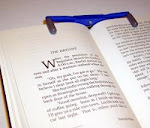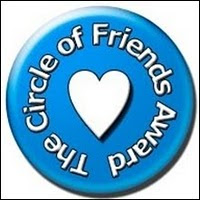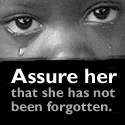Christine Jeske first grew to love Africa when she was attending the University of Wisconsin at Madison. She took a class called “African Storytellers.” She took several more African Studies classes and decided to join the Peace Corps. Instead she ended up marrying Adam and heading to Central America together. She ultimately ended up in Africa seven years later, with two toddlers in tow.
‘Into the Mud: Inspiration for Everyday Activists: True Stories of Africa ’ is her story about their time in South America. Here is the description of the book from its back cover:
’ is her story about their time in South America. Here is the description of the book from its back cover:
Aids Patients. Malnourished Babies. Child Soldiers.
If we look only to media accounts, Africa can appear mired in a decades-long failed attempt to imitate the West. But holistic missionary Christine Jeske sees another story unfolding, a spiritual story of transformation.
Through accounts of ordinary individuals, Jeske reveals people and communities in South Africa that are being changed into something new something holy… refashioned by God to exist afresh in the muck of daily life. Along the way, she uncovers glimpses of God’s kingdom breaking out among those to whom Jesus said it belonged – not the deserving or the religious, but the poor.
Here is the biography of Christine:
Christine Jeske is the former director of a microfinance project in South Africa and currently a lecturer at Evangelical Seminary of Southern Africa. A graduate of the University of Wisconsin and Eastern University, she and her husband, Adam, has served as development workers in Nicaragua, China, and South Africa.
Christine shares what she sees as Jesus having in mind for His followers, and how He is making it happen in South Africa, her current residence:
Jesus planned a legacy of people around the world whom He would sanctify as He makes them capable of following in His footsteps. People who are not taken out of the world, but who are right in the world. People who live inside their culture, but think differently. People who are sanctified through the same power that brought Him back to life.
Jesus was the first new living sprout out of a chopped-down tree stump. And these sprouts are everywhere we turn. Between every stereotype I have ever imagined of South African culture and every reality that grates on my outsider expectations for what this culture could be, there is a present-day reality of what God is making here. (p. 22)
This book provides portraits of people whom Christine has met as she has been in South Africa. The first person who highlights is Sofi, a native of England and Australia who moved to South Africa as a young adult. She married Robs, a black South African who had recently died from AIDS/ HIV. She stayed in South African, and made a big difference in the lives of many:
Eventually she began spending most of her time with people affected by HIV in the township and rural areas nearby. On any given day, she might drive to the hospital with her SUV packed to the limit with sick people, fill out paperwork for an illiterate grandmother’s government retirement pensions… She washed people who had been left to die in their own waste, worked late into the night with soot-blackened hands evacuating people from wildfires, and delivered a young mother’s baby. (p. 36)
Sofi is truly the hands and feet of Jesus. She got ‘into the mud.’ And Christine see parallels to the life of Christ:
I like to think that the Jordan River where Jesus was baptized was muddy, too. Jesus did not fear the dirt caked between His toes and was not ashamed to scrub the dirt from between the toes of His dearest friends. He touched forbidden unclean leprous fingers and spoke to men and women of the wrong class, the wrong nationality, and the wrong religious practices. (p. 42)
When Christine’s daughter, Phoebe, broke her wrist and needed to be treated, Christine debated whether to take Phoebe to Emmaus Hospital, a fifteen-minute drive from their house, or another hospital forty-five minutes away; it was unofficially considered to be the upper-class hospital. Christine decided to try Emmaus first. Christine compared her situation to that of God’s decision to send His Son down for our salvation:
God gave up His own Son’s nobility rights and security in order to love a world full of broken people. Jesus never fought for His own rights, but instead trusted God minute by minute in storm, at sinners’ homes, and on the cross. As a way of explaining what it means to be humble and trusting, He challenged people to become like children. Whether or not Phoebe knew it, her hospital visit for me became a picture of what it means to live and walk into broken situations trusting Christ. It means losing the ability to control our own safety. It means not getting pushed to the limits of our strength and seeing emotion spill out in sometimes ugly ways. (p. 73)
One final anecdote that Christine shared is when she attended a conference in Durban, a city of two-and-a-half mission residents known for its beaches and its crime. After a fairly contentious discussion with a young Indian man in a beret who had questioned her motive, she decided to head toward the Indian Ocean, praying this prayer as she went:
Lord, I just want someone to recognize that we’re all just human. I want you to show me You love me. And I want to see how much You love all these people, too. (pp. 191-192)
On her way back to the hostel where she was staying, she encountered two young men. As they walked in front of her, one of them turned around and faced her straight on, and said:
“Sister, I just want you to know we’re human beings, too. God loves us, and God loves you, and we love you, too.” (p. 193)
As she reached her hostel (called a backpacker in South Africa), they left her, and the man concluded their encounter this way.
“We just want you to know we were watching out for you… Sister, it’s nothing. We’re not asking for money. We just want one thing. We want you to remember when you’re waking up in your warm bed and going about your day doing whatever you feel like doing, remember we’re here on the street. Remember us.” (p. 193)
She indeed does remember those men:
As I write this, I remember them, sleeping on the street, losing their shoes, feeling knife wounds across their young faces, and somehow, I hope, coming to know the God who also bore wounds out of love for them and for us. (p. 194)
The Lord seems to be exposing me to His servants in the far reaches of the world (see my book reviews of ‘Embracing Your Freedom’ by Susie Larson, ‘Scared: A Novel on the Edge of the World' by Tom Davis, and ‘Love Mercy: A Mother and Daughter’s Journey from the American Dream to the Kingdom of God’ by Lisa and Ty Samson). In addition to these books, my church annually sends a mission team to help out at Living Hope International, an orphanage in Zambia; there is a team who just returned from there this week. I am getting the feeling that someday, He will send me with that team. I thank Him for preparing me in advance for what He has in store.
I really liked this book. I appreciate how Christine shared her journey with her readers. Each chapter has Questions for Discussion and Reflection. I think this would be a great book for a small group to work through; the members of that group will be enriched!
You can order this book here .
.
This book was provided by Moody Publishers for review purposes (thanks, Janis!).




























.jpg)







No comments:
Post a Comment